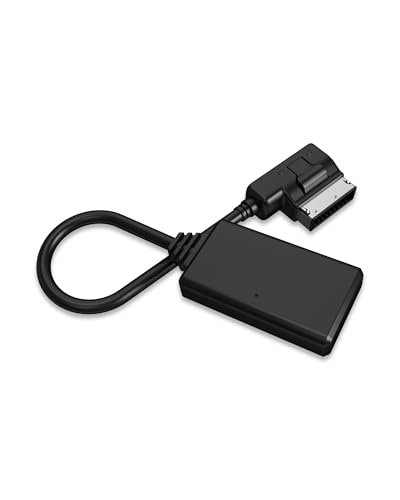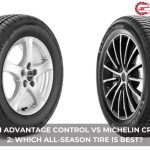When we’re in the market for a used car, we all want to make sure we’re getting the best bang for our buck, especially when it comes to luxury vehicles like the Audi Q5. It’s a beautiful ride, known for its sleek design, comfort, and performance. But, like any car, not all years were created equal. There are those golden years that shine a bit brighter and, conversely, some that we’d do well to steer clear of.
We’ve done the legwork to sift through the data, reviews, and recalls to pinpoint the Audi Q5 years that might give you more headaches than horsepower. It’s not just about saving a few bucks upfront; it’s about making an informed decision that saves us from future frustration. So, let’s dive in and discover which years of the Audi Q5 are best left to the history books and why avoiding them can lead to a smoother, more enjoyable driving experience.
The Importance of Choosing the Right Year for Your Audi Q5
Choosing the correct model year for an Audi Q5 is crucial to avoiding regrettable purchases. In our research, we’ve discovered that certain years of the Audi Q5 are prone to specific issues that can impact both the driving experience and the overall value of the vehicle. These problems range from minor inconveniences to serious mechanical failures that could result in costly repairs.
Firstly, reliability stands as a top concern. Some model years have been reported to have more reliable performance records, translating into fewer visits to the mechanic and more time enjoying the ride. For instance, certain years may be known for their robust engines and transmissions, which are key components in any vehicle’s longevity.
Secondly, recall history plays an integral part in identifying the best model years. Vehicles with fewer recalls typically indicate better manufacturing processes and quality control, which directly affects long-term satisfaction. By analyzing recall data, we can pinpoint which Audi Q5 years demonstrated higher standards of production.
Furthermore, technological advancements also significantly impact the choice of model year. Later models usually come equipped with the latest in automotive technology, offering enhanced safety features, better fuel efficiency, and improved infotainment systems. Choosing a year that balances new features with proven reliability can lead to a more satisfactory ownership experience.
Lastly, depreciation is an inevitable aspect of car ownership, but some years depreciate at a slower rate due to their popularity and reliability. Identifying these model years can ensure you’re making a sound investment that retains more of its value over time.
Through careful consideration of these factors, we aim to guide you toward an Audi Q5 year that offers the best balance of performance, technology, and value. This approach helps in making an informed decision, setting you on the path to a rewarding luxury SUV ownership experience.
Audi Q5 Years to Avoid
Building on the importance of selecting the right model year for a used Audi Q5, it’s crucial to spotlight the specific years that might not serve your best interests. From our research and considering reliability scores, recall incidents, and overall owner satisfaction surveys, we’ve identified a few Audi Q5 years that could potentially lead to more trips to the mechanic than others.
- 2011 Audi Q5: This model year faced numerous complaints related to excessive oil consumption. Owners frequently reported having to top off their oil between regular service intervals, an issue that can lead to more significant mechanical problems down the line.
- 2012 Audi Q5: Similar to the 2011 model, the 2012 Audi Q5 continued to struggle with oil consumption issues. Additionally, there were noteworthy concerns surrounding the water pump and thermostat, which could fail prematurely, leading to overheating and possibly engine damage.
- 2014 Audi Q5: While improvements were seen in the oil consumption issue, the 2014 model year introduced a new problem area with its transmission. Some owners experienced erratic shifting behaviors, particularly in the automatic transmission, which not only affects the driving experience but could also entail costly repairs.
- 2016 Audi Q5: This year is noted for its electrical problems, ranging from malfunctioning dashboard displays to issues with the MMI (Multi Media Interface) system. Such electrical glitches can be frustrating, expensive to fix, and detract from the otherwise luxurious driving experience of the Audi Q5.
Identifying these specific model years can help prospective buyers approach the market more cautiously. Armed with this knowledge, you can ask sellers direct questions about these known issues, review maintenance records more critically, or possibly decide to focus your search on other model years with a stronger history of reliability and satisfaction.
By steering clear of these problematic years, you’ll be better positioned to find an Audi Q5 that lives up to its reputation for luxury, performance, and dependability, ensuring a more enjoyable ownership experience.
Comparing Problematic Years to the Best Years
After noting the importance of avoiding certain Audi Q5 years due to significant issues, we shift our focus to contrasting those problematic years with the best ones. It’s crucial for buyers to distinguish between the models to target and those to steer clear of for a satisfactory luxury car experience. Let’s dive into the comparison.
Problematic Years
- 2011 and 2012 Models: Identified for their high oil consumption, these years might lead to more frequent visits to the mechanic, potentially resulting in higher maintenance costs.
- 2014 Model: This year stands out due to transmission problems, including erratic shifts and sudden loss of power, which can be both dangerous and expensive to repair.
- 2016 Model: Marked by electrical issues, involving malfunctioning infotainment systems and erratic dashboard displays, this year could detract from the otherwise premium experience the Q5 aims to offer.
- 2017 Model Year: A complete redesign brought about improved reliability, updated technology, and a more refined driving experience. This year represents a significant leap forward and is often celebrated for its balanced performance and comfort.
- 2019 and 2020 Models: Both years benefit from the advancements made in 2017, with minor improvements and updates. These models boast high reliability ratings, advanced safety features, and user satisfaction, spotlighting them as ideal choices for potential owners.
- 2021 Model: Introducing the latest in Audi’s infotainment and digital instrument cluster technologies, along with enhanced driver assistance features, the 2021 Audi Q5 stands as a testament to the brand’s commitment to innovation and safety.
By examining the best and worst years side by side, buyers can make informed choices, focusing on models that elevate the driving experience while minimizing potential for costly repairs. Opting for models like the 2017, 2019, 2020, or 2021 Audi Q5 guarantees owners not just a luxury SUV, but one that promises performance, reliability, and cutting-edge technology for an enjoyable ownership journey.
How to Make an Informed Audi Q5 Purchase
After exploring the years to avoid and pinpointing the optimal model years for the Audi Q5, it’s crucial to proceed with a strategy ensuring a wise purchase. Let’s delve into actionable steps to make an informed Audi Q5 acquisition.
Research and Verify
- Investigate Reliability Ratings: Begin by reviewing the reliability rankings of various model years. Sources like Consumer Reports and J.D. Power provide insight into vehicle dependability over time.
- Examine Recalls and Service Bulletins: The National Highway Traffic Safety Administration (NHTSA) website is a goldmine for discovering any recalls or manufacturer service bulletins associated with the Audi Q5.
Personal Inspection and Professional Evaluation
- Conduct a Thorough Visual Inspection: Look for signs of wear and tear, checking the vehicle’s body for rust or damage. Remember, appearances can be telling.
- Test Drive for Performance: Pay close attention to the Audi Q5 during a test drive, listening for unusual noises and assessing the car’s handling, braking, and acceleration capabilities.
- Seek a Mechanical Inspection: Before finalizing the deal, have the Audi Q5 inspected by a certified mechanic familiar with the brand. This step may uncover hidden issues not immediately apparent.
- Request a Vehicle History Report: Use services like Carfax or AutoCheck to get the car’s history. Key information includes prior accidents, service records, and ownership changes.
- Consider Certified Pre-Owned (CPO) Options: Audi’s CPO program offers a comprehensive inspection process and includes a warranty extension. This option provides additional peace of mind, albeit at a higher price point.
By integrating these guidelines with our knowledge of which Audi Q5 model years to select and avoid, we’re equipped to make a purchase that meets expectations in quality, reliability, and overall satisfaction. Taking these steps seriously improves our chances of enjoying a positive ownership experience with the Audi Q5.
Conclusion
We’ve walked you through the essential steps and shared our insights on which Audi Q5 years might not be the best choice for your next vehicle. Armed with this knowledge and our tips for a thorough pre-purchase check, you’re now better equipped to make a decision that suits your needs and avoids potential pitfalls. Remember to take your time, do your homework, and trust your instincts. A little effort upfront can save you from headaches down the road and help you find the Audi Q5 that’s perfect for you. Happy car hunting!
Related Posts:















